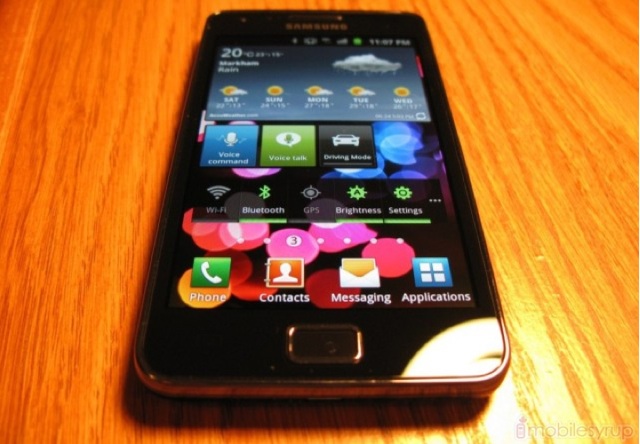
The Samsung Galaxy S II is coming to Canada soon. We aren’t able to divulge carrier details but during a media briefing we had a chance to play with the device, my first impressions are below and will follow up with a full review shortly.
Samsung has a solid competitor not only to the iPhone, but to the rest of the highly-competitive smartphone market. It seems like they’ve taken their hard-earned lessons to heart, and improved in every way upon the original.
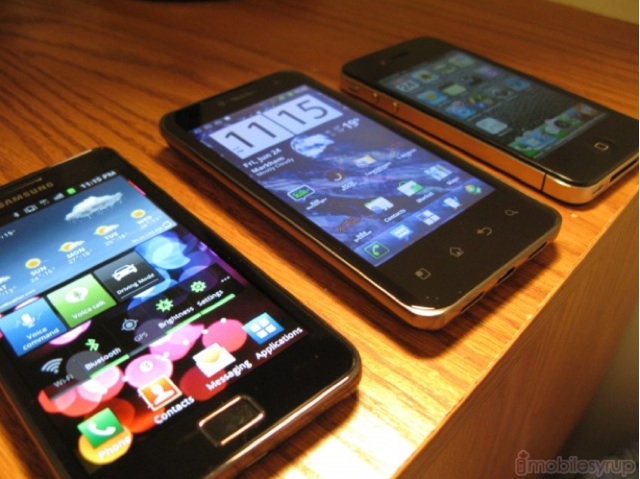
Hardware
The hardware is all plastic, but its lineage owes far more to the Nexus S and Infuse 4G than to the original Galaxy S series. It’s clear Samsung learned a few things from the original: plastic is fine as long as it doesn’t creak; plastic is fine as long as it doesn’t invite fingerprints.
The SGS2 improves upon the first in both respects: the main plastic body extends through the sides and partway to the back, creating a very sturdy “unibody” casing that feels far sturdier than any previous Samsung device I’ve used, while keeping it admirably thin at 8.5mm. That’s 1.4mm thinner than the original.
Before moving onto the front, I must note that the battery cover, which only fits over a portion of the entire back, seems flimsy and breakable. But Samsung has done some wonderful things with plastic, as this thing bends and bends while maintaining its shape. It also has a wonderful ribbed pattern that feels great in the hand and provides more grip than the smooth back of the original Galaxy S.
The screen is hands-down the best in the business. Discount for a second that the 4.3″ display still displays the same number of pixels as the 4″ original, and some 30% fewer than the 3.5″ iPhone 4. Once you see it, you will understand. The blacks are the blackest, the colours the most vivid, the text the sharpest. I don’t know how else to explain it, but when I am reading black text on a white background it feels like I’m reading a piece of paper. There is no screen at all. This is likely because the screen itself is so close to the glass, preventing that disconnected feeling you get from looking at a lower-quality LCD. I wish this didn’t read like hyperbole, but it’s the only way I can describe it. With a slightly higher resolution, the Super AMOLED display of the Galaxy S II would be perfect. As it stands, there are issues with pixel density and aliasing that are not present on the iPhone 4’s Retina Display. But the 4.3″ size makes it far easier, for me at least, to comfortably read articles, books and web pages.

The design is also commendable. There is a simplicity to the face that is absent from most other Androids. When the screen is off, only the Home button is visible, as the Back and Menu buttons are lit only when needed. There is a noble austerity to the entire device, from its solid lightness to its lack of pretension. It has just two ports: a combination USB/HDMI port on the bottom (known as a MHL port) and a 3.5mm headphone jack on top. The left side finds the small black volume rocker and on the right a power button. There is a single speaker on the bottom rear of the device, where a small chin protrudes.
The phone at 116g is meagre, but weighted perfectly. Holding it to talk is not cumbersome, despite its ample size.
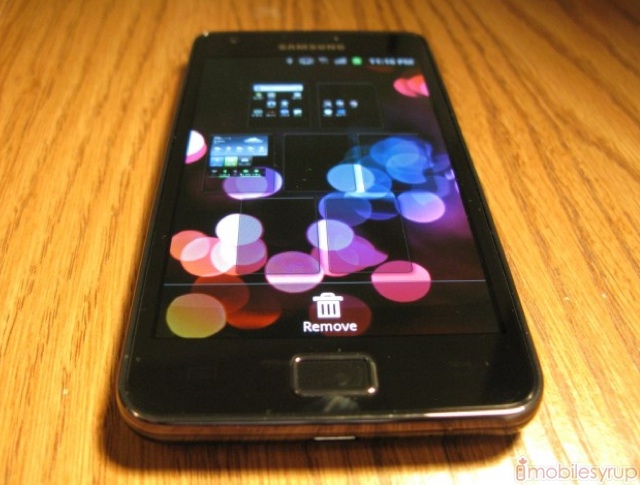
Software
The Galaxy S II ships with TouchWIZ 4, a skin which at first resembles its much-derided predecessor. Luckily, Samsung has made some drastic improvements to performance and aesthetic over the past year, and I can happily say it rivals Sense in responsiveness and usefulness.
Give me a stock Android skin any day of the week, but some of the features Samsung has added to the new TouchWIZ are admirable. But more than anything, this is Android running flawlessly, without slowdowns, crashes or memory problems. That it took a device with a 1.2Ghz dual-core processor and 1GB RAM to finally tame the wild beast that is Android is a bit mystifying, but tame Android it does.
Browsing flies. The stock browser is hardware-accelerated, and over 3G or WiFi performance is unprecedented. There is an iOS-like kinetic scrolling mechanism that all but does away with jerky Android browser scrolling. Pinching your fingers together brings up the tab menu. It’s a simple thing that, combined with the flawless performance, makes me want to use the stock browser. I haven’t done that since 2008.
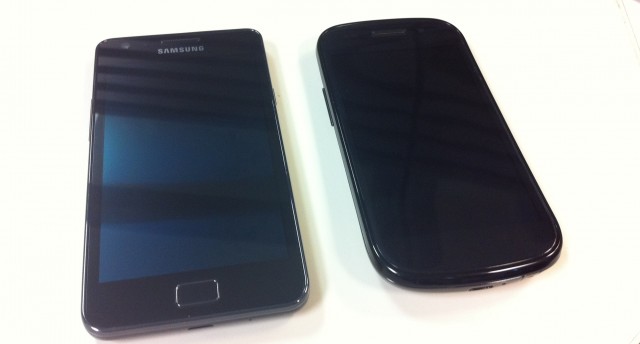
Elsewhere
The Galaxy S II has Android 2.3.3 Gingerbread loaded, and the dark aesthetic has been adapted nicely to work with TouchWIZ. The camera app has been given a nice visual overhaul, and the 8MP camera takes great shots. Focus is fast, and photos have a nice amount of detail, though colours are somewhat muted giving surroundings a dreary look. Some people prefer the way colours “POP” on the iPhone 4, but I think it’s a misnomer to say its quality is superior. Rather, it seems that Samsung captures colours more accurately, and certainly with more detail. It’s a matter of opinion whether purists will prefer Samsung’s results. The 2MP front camera also take nice photos in good lighting and the phone natively supports video calling, though as far as I can tell only between Samsung devices.
Bundled apps are appreciated, but cannot be removed, which is a shame. There are four hubs: Games, Social, Music and Readers, each powered by a different third-party service. For example, Music is a modified version of 7Digital’s Android app, and Readers is a combination of Zinio, PressDisplay and Kobo. Surely Samsung could have left these out without opposition, but for them it’s a matter of trying to sell content on the device a la iTunes and differentiate from the other Android manufacturers who are without licensing deals.
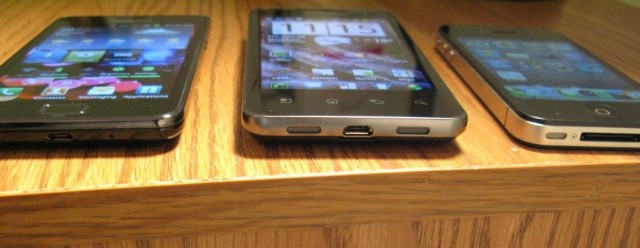
While the SGS2 doesn’t have a Tegra 2 processor in it, it’s arguably a better gaming machine than the equivalent Optimus 2X or Motorola Atrix. It achieves an awesome 3200+ points on the Quadrant benchmark, compared to around 1500 from the Nexus S and 2500 from the Atrix.
Battery life has proven a marvel. At 1600mAh, it’s some 300milliamps less than the Atrix, and yet it seems to last far longer. In fact, the Galaxy S II has the best battery life of any Android device I’ve tested to date. I clocked nearly 26 hours on a single charge and still had 19% left before I recharged it, and that was with doing what I normally do through the day: browsing, calls, Twitter, email and camera. I’ve heard good things from other users, too, so I know I’m not a lucky aberration.
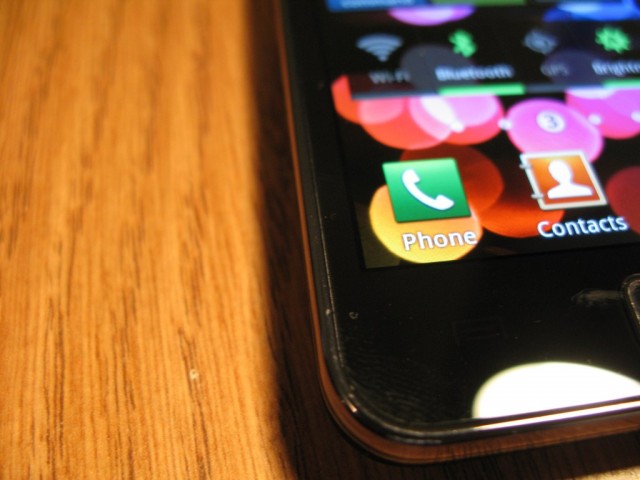
I’ll leave the rest for the review, but so far, so good. If you’ve had a bad experience with Android before, there is still a lot to like about the Samsung Galaxy S II. Make no mistake though, this is one of the smoothest smartphone experiences I’ve ever had, and that includes extensive use of the iPhone 4. Sure, the experience is different, and some would say not as refined, but there are few if any tasks one cannot accomplish as quickly or easily on the SGS2 as they can on an iOS device. It’s taken this long, but with the latest iteration of Samsung, HTC and Motorola devices, it seems that the hardware has finally caught up with the demands of the Android software.
—-
In no particular order, here are a couple field notes of what Samsung has added to the experience:
– Double-tap the home screen for Vlingo-powered voice commands. This also works at the home screen
– Touch two points of a web page / photo and tilt the phone to zoom in and out
– Move icons around the homescreens by tilting the phone
– Mute incoming calls and sounds by turning over the phone
– Press and hold an empty part of the home screen to bring up a custom editing menu with excellent widget support
– 7Digital-powered Music Hub
– Extensive social media support through the Social Hub
– Readers Hub with News/Books/Magazine support (PressDisplay/Kobo/Zinio)
– Game Hub powered by mobage
– Built-in Video Maker and Photo Editor
– Kies air management to connect phone to PC or Mac
– Built-in IM client, FM Radio, Polaris Office
MobileSyrup may earn a commission from purchases made via our links, which helps fund the journalism we provide free on our website. These links do not influence our editorial content. Support us here.


